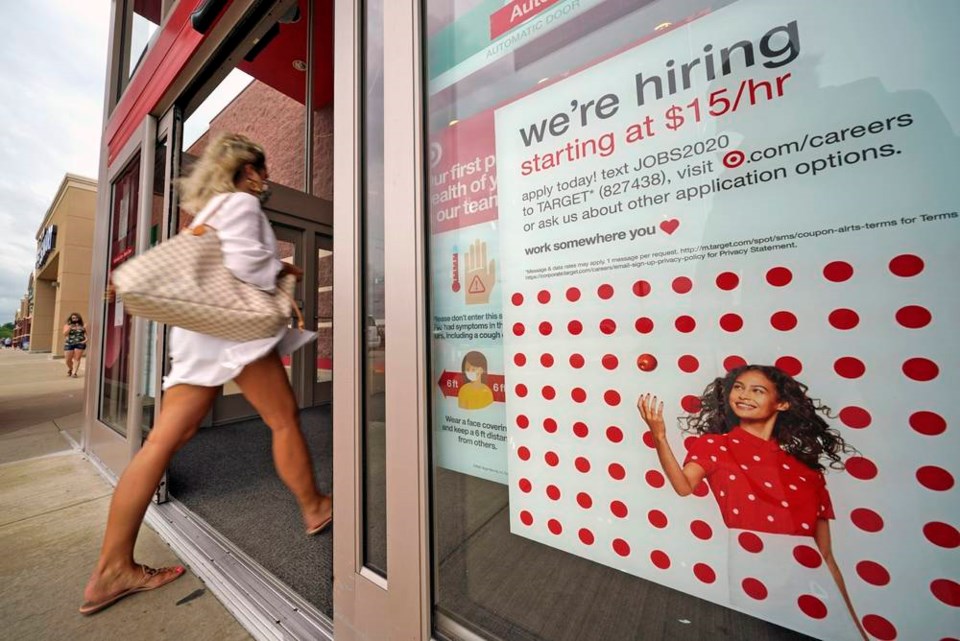Greater Victoria’s job picture brightened in September, with 2,400 more people working than in August.
The capital region’s unemployment rate fell to 9.1 per cent last month from 10.3 per cent in August, reflecting better employment numbers in B.C. and across the country.
B.C. saw job numbers climb by 55,000 to reach an unemployment rate of 8.4 per cent, Statistics Canada said Friday in its monthly labour force survey.
Nationally, the unemployment rate dropped to nine per cent, thanks to 378,000 more people working. Many of those jobs are full-time. The pandemic hit employment numbers hardest in May, when the national unemployment rate reached a record high of 13.7 per cent.
The capital region’s numbers might have improved, but in the accommodation and food services category, only 9,300 people were employed in September of this year, down from 15,200 the same month in 2019, a 39 per cent drop.
The information, cultural and recreation sector saw employment slide to 6,100 last month from 9,500 in September 2019.
Retail and wholesale trade also declined to 25,000 people employed in September, compared to 27,100 the previous year.
However, some sectors have seen increases, including health care and social services, with 30,300 people employed last month, up from 26,800 the same month in 2019.
Professional, science and technical services rose to 20,800 jobs from 19,000. Transportation and warehousing moved to 7,500 jobs from 6,200.
And manufacturing jobs rose to 7,400 jobs from 6,100 year-over-year.
Statistics Canada national numbers climbed as students returned to school and parents went back to work.
The overall gains in September brought employment to within 720,000 of pre-pandemic levels.
The agency says mothers and fathers had employment levels that matched what was recorded pre-pandemic, but it’s taking longer for mothers to get back to regular working hours.
The number of mothers who worked less than half their usual hours in September was 70 per cent higher than in February, compared with 23.7 per cent for fathers.
The agency also says that a higher percentage of mothers than fathers reported working from home in the month, suggesting that child-care responsibilities were still falling on women.
Economists had expected a slower pace of job gains in September following the trajectory over the summer. Canada’s labour market gained 240,000 jobs in August, a slowing from the 418,500 jobs gained in July.
Financial data firm Refinitiv said economist estimates were for a gain of 156,600 jobs and an unemployment rate of 9.7 per cent.
Most of the employment in September was in full-time work, which rose by 334,000 after months of faster gains in part-time employment.
Statistics Canada also says that gains were recorded in every province except New Brunswick and Prince Edward Island, with Ontario and Quebec leading the way.
Still, there were 1.8 million Canadians unemployed in September, with the vast majority, about 1.5 million, looking for work.
Statistics Canada says the unemployment rate would have been 11.9 per cent in September had it included in its calculation people who wanted a job, but didn’t look for work.
CIBC senior economist Royce Mendes says the path ahead for the labour market is murky because of the rise in COVID-19 case counts.
“The country is now faced with new virus cases clearly trending in the wrong direction, threatening to upend the labour market recovery,” he said.
cjwilson@timescolonist.com



